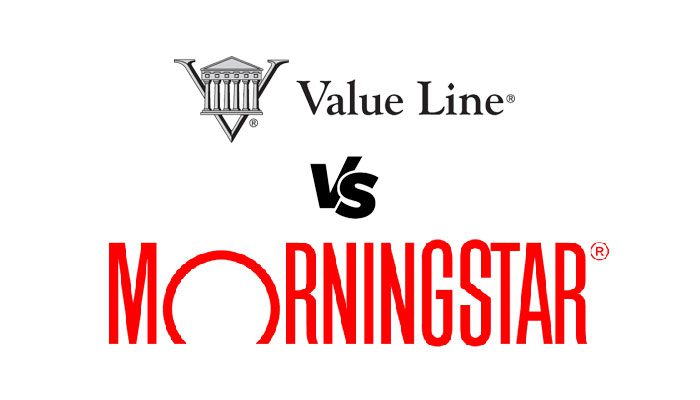When it comes to researching stocks, there are countless resources available. Two popular platforms that have gained a lot of traction in recent years are Value Line and Morningstar. Both are well-known for their comprehensive stock research and analysis, but they differ in several key areas. In this article, Value Line vs Morningstar, we will take a closer look at each platform to help you decide which one is best for you.
Coverage and Scope
One of the biggest draws of both Value Line and Morningstar is the comprehensive stock research and analysis they offer. However, they differ in terms of the scope and coverage of the research they provide.
Value Line covers a wide range of stocks, including small-cap, mid-cap, and large-cap stocks. The platform provides detailed analysis and reports on individual stocks, as well as industry and sector analysis. Value Line also offers a wide range of tools and resources such as stock screening, ranking systems, and historical data.
Morningstar, on the other hand, focuses mainly on mutual funds and exchange-traded funds (ETFs) rather than individual stocks. The platform provides detailed analysis and reports on mutual funds and ETFs, as well as portfolio analysis and portfolio tracking tools. Morningstar also offers a wide range of educational resources such as articles, videos, and webinars.
Research Quality and Methodology
Both Value Line and Morningstar are known for the quality of their research and analysis, but they differ in terms of their methodology.
Value Line uses a proprietary methodology known as the “Value Line System” which combines a variety of quantitative and qualitative factors to rank and analyze stocks. The methodology includes a focus on earnings and price momentum, as well as a thorough analysis of the company’s financials, management, and industry trends.
Morningstar, on the other hand, uses a proprietary methodology known as the “Morningstar Rating” which focuses on a fund’s past performance and risk-adjusted returns. The methodology also includes a thorough analysis of the fund’s holdings, expenses, and management.
Data and Tools
Both Value Line and Morningstar offer a wide range of data and tools to help you make informed investment decisions. However, they differ in the type and complexity of the tools they offer.
Value Line offers a wide range of data and tools such as stock screening, ranking systems, and historical data. The platform also offers a stock selection guide and a proprietary ranking system known as the “Timeliness Ranking” which assigns a 1-5 ranking to stocks based on the likelihood of their price appreciation over the next 6 to 12 months.
Morningstar, on the other hand, offers a more limited range of data and tools, focusing mainly on mutual funds and ETFs. The platform offers a fund screener, portfolio analysis and tracking tools, and a proprietary rating system known as the “Morningstar Rating” which assigns a 1-5 star rating to funds based on their past performance and risk-adjusted returns.
Accessibility and Ease of Use
Both Value Line and Morningstar offer user-friendly interfaces and easy navigation, but the accessibility and ease of use of the platform may differ depending on your level of experience.
Value Line’s interface is geared towards more experienced investors and offers a wide range of advanced tools and features. The platform also offers a wide range of educational resources such as tutorials and webinars to help users navigate the platform.
Morningstar’s interface is more user-friendly and geared towards a more casual investor. The platform offers simple navigation and easy-to-use tools, but the resources and data may not be as advanced as those offered by Value Line.
Pricing
When it comes to pricing, both Value Line and Morningstar offer various subscription options to suit different needs and budgets.
Value Line offers several subscription options, including a monthly, quarterly, and annual subscription. The monthly subscription starts at $39.95, while the quarterly and annual subscriptions offer a discounted rate. The platform also offers a free trial for users to try the platform before committing to a subscription.
Similarly, while Morningstar provides free useful information for its users, a paid subscription is required to unlock its full potential. This premium subscription offering referred to as “Morningstar Investor” provides investors with a variety of tools to help monitor and evaluate their portfolios, as well as identifying new potential investment opportunities. For the fundamental based investors, Morningstar Investor could be the one stop shop for all your investing needs at just $34.95 monthly, or $249 for the year (a savings of over 40%).
Click here for a free trial of Morningstar Investor and unlock your investing potential today.
Final Thoughts
When it comes to choosing between Value Line and Morningstar, it ultimately comes down to what type of investor you are and what you are looking for in a research platform. If you are looking for comprehensive stock research and analysis, and a wide range of tools and resources, then Value Line may be the better choice for you. However, if you are primarily interested in mutual funds and ETFs, and you want a more user-friendly interface, then Morningstar may be the way to go. Both platforms have their own set of pros and cons, and it’s important to weigh them and then decide which one is the best fit for your needs.



































